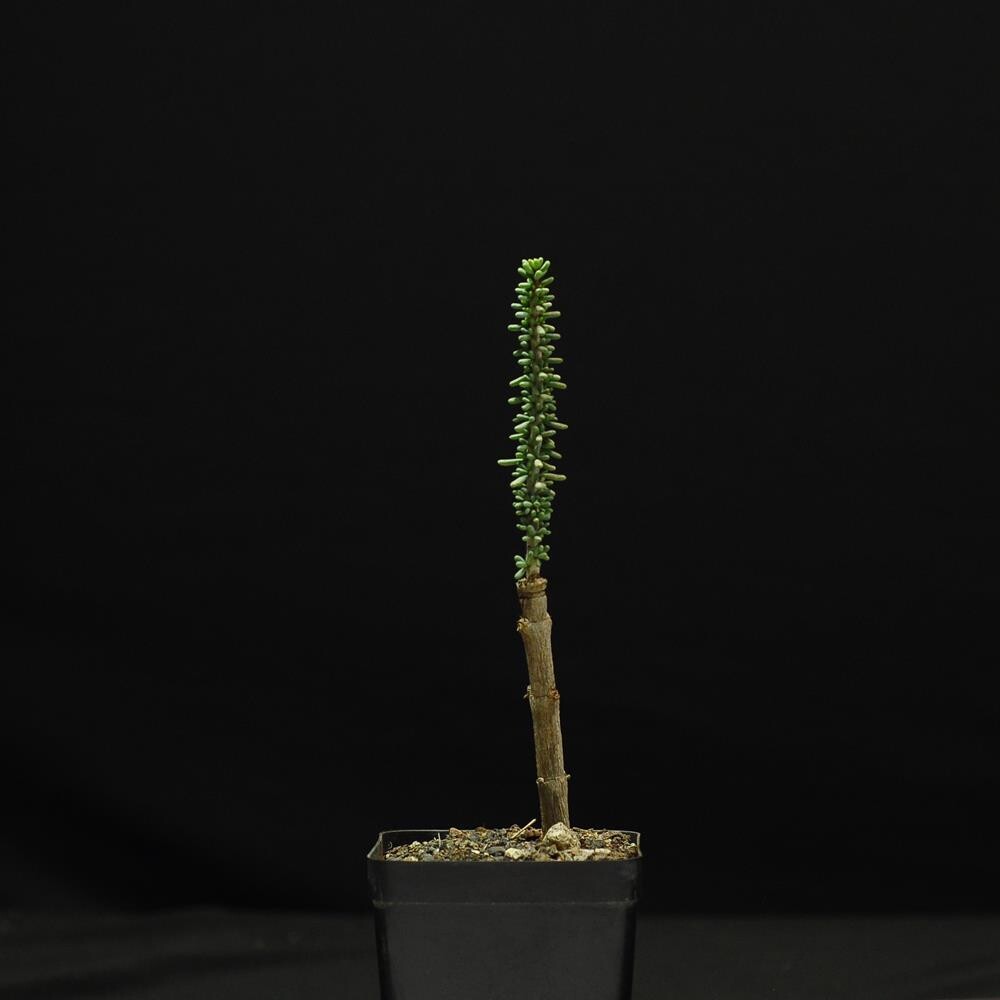Please check the Shipping Updates Page for information on shipping.
Ceraria namaquensis
This has been grafted on Portulacaria. Plant grows into a beautiful bush. Our grafts are into second year of growth after grafting.
Origin of Name
The genus name "Ceraria" is derived from the Latin word "cera," meaning wax, possibly referring to the waxy coating on the plant's leaves which helps to reduce water loss. "Namaquensis" indicates its geographical origin from Namaqualand, a desert area known for its environmental extremes. Together, the name highlights both the botanical characteristics and the natural habitat of this species.
Technical Description of Plant
Ceraria namaquensis is a slow-growing, drought-tolerant succulent that can reach up to 2-3 feet in height. It has a shrubby growth habit, with thick, succulent leaves that are grey-green in color, often with a slightly bluish tint. The leaves are small, rounded, and densely packed along the branches, providing a lush, textured appearance. The plant produces small, inconspicuous greenish-yellow flowers that may appear seasonally, followed by red berries that add an additional layer of visual interest.
Origin of Plant
Native to the Namaqualand region in South Africa, Ceraria namaquensis thrives in rocky outcrops and sandy soils, where it has adapted to survive long periods of drought. This region is known for its harsh climate, with hot, dry summers and mild winters, conditions under which this plant has evolved to flourish.
Conservation Status
Ceraria namaquensis is not listed as endangered, but like many native plants of South Africa's unique ecosystems, it faces threats from habitat destruction and climate change. Conservation efforts and responsible cultivation are vital for preserving the biodiversity of its native habitat.
Care Instructions
Ceraria namaquensis requires a well-draining soil mix and should be placed in an area that receives plenty of bright, indirect sunlight. It can tolerate some direct sunlight, but too much can scorch the leaves. Water sparingly, allowing the soil to completely dry out between waterings, and reduce watering further during the winter months to mimic its natural dormant period. This plant is not frost-tolerant and should be protected from cold temperatures. Minimal fertilization is needed, with a light application of a succulent fertilizer in the spring to support growth.
Ceraria namaquensis is an excellent choice for those interested in unique, drought-tolerant plants that offer a glimpse into the biodiversity of South Africa's arid regions. Its care requirements are minimal, making it suitable for beginners, yet its distinct appearance provides appeal for more experienced collectors as well.
